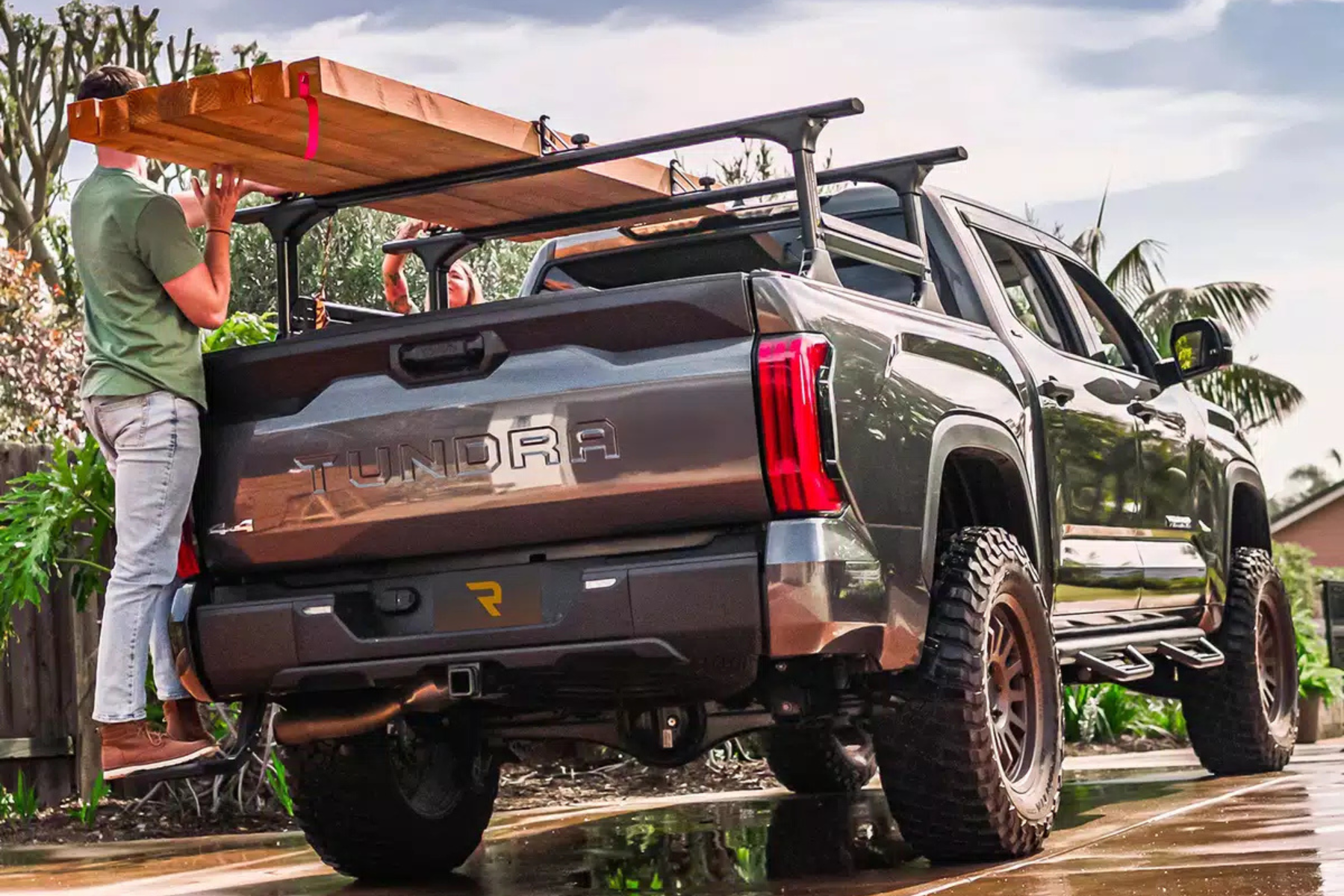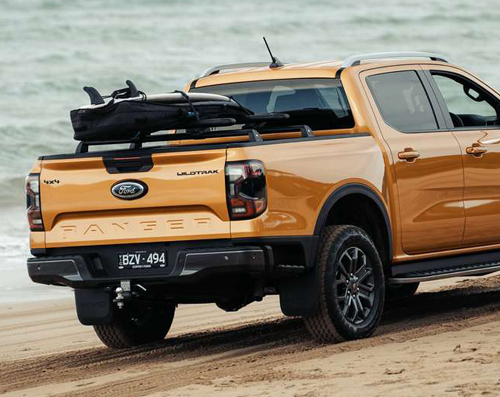
Static Vs Dynamic Load Capacity For Ute Cover
Understanding Load Capacity for UTE Covers
When choosing a cover for your ute, understanding load capacity is critical for both safety and performance. Ute owners, whether using their vehicle for work or outdoor adventures, need a cover that can handle specific weight requirements. The right load capacity ensures the cover remains functional and secure, whether stationary or in motion. This guide will help you understand the difference between static load capacity and dynamic load capacity, crucial factors when deciding on the right roll cover. RealTruck, with its extensive range of tonneau covers, offers durable and reliable options tailored to your needs.
What is Static Load Capacity?
Static load capacity refers to the weight a ute cover can support when the vehicle is stationary. This is particularly important for ute owners who use their vehicle as storage or load extra items when parked. For example, if you're on a camping trip or working on-site, the static load capacity accounts for the weight of gear, tools, or materials placed on the tonneau cover while it's stationary.
RealTruck’s tonneau covers are built to handle these stationary loads with high durability. Imagine setting up camp for a few days and storing heavy camping gear on your ute cover, static load capacity ensures that the cover can support the weight without damage.
Examples of static load use:
- Camping gear loaded while parked at a site.
- Storing heavy equipment while the vehicle is parked at a work location.
Understanding basic static load rating helps determine the right cover for your needs.
What is Dynamic Load Capacity?
On the other hand, dynamic load capacity measures the weight a ute cover can support while the vehicle is in motion. Dynamic load capacity is especially crucial for transporting items on the road, where forces such as wind resistance, bumps, and turns can increase the stress on the cover. Understanding basic dynamic load capacity helps determine the right cover for your needs.
For ute enthusiasts who frequently transport materials or equipment to job sites, or haul outdoor gear to adventure locations, dynamic load capacity ensures that the cover withstands the added strain of movement. RealTruck offers ute covers that are designed to handle such dynamic stresses, ensuring that your cover performs safely while on the road.
Examples of dynamic load use:
Transporting camping gear while driving to your destination.Hauling work tools or construction materials between sites.

Dynamic vs Static Load Capacity: Key Differences Explained
When comparing static and dynamic load capacity, there are a few important distinctions to keep in mind:
Position: Static load capacity applies when the vehicle is stationary, while dynamic load capacity is relevant when the vehicle is in motion.
Weight limits: A ute cover can generally support more weight when stationary due to the lack of external forces. However, dynamic load capacity is typically lower because the cover must endure additional stresses like wind resistance, bumps, and turns while in motion.
Usage scenarios: Static load capacity is ideal for long-term storage or loading items when parked, such as camping gear or heavy work tools. Dynamic load capacity, on the other hand, is essential for safely transporting items while driving, especially over long distances or rough terrain.
Understanding these differences will help you choose the right cover for your specific needs. Whether for stationary storage or transporting gear on the road, RealTruck offers ute covers designed to meet these varying load requirements.
Why Load Capacity Matters for Your UTE Cover
Choosing a tonneau cover with the correct load capacity is essential to avoid safety issues. Overloading beyond the static or dynamic limits can lead to damage to both the cover and your vehicle, as well as instability on the road. For instance, exceeding the dynamic load rating / capacity could cause the cover to deform or lead to dangerous handling issues on uneven terrain. Similarly, placing too much weight on a stationary ute cover could result in structural damage.
At RealTruck, all ute covers are engineered with these considerations in mind, ensuring they meet both static and dynamic load capacity requirements.
Potential risks of exceeding load capacity:
- Damage to the ute cover or the roof structure.
- Increased wear and tear on the vehicle’s suspension.
- Poor vehicle handling, especially when driving.
Factors That Affect Load Capacity

Several factors influence the load capacity of a ute cover, including:
- Material: Stronger materials like aluminium or reinforced plastic offer higher load capacities.
- Design: Covers with additional support structures or reinforced frames can support heavier loads.
- Installation quality: Proper installation is key to ensuring that a cover performs to its maximum capacity.
- Manufacturer specifications: Always refer to the manufacturer’s guidelines to understand the limits of the cover you’re using.
- Tub bracing: Tub bracing provides additional strength to your tub so you can carry more weight without causing any damaging or cracking.
RealTruck ensures that all of its ute covers undergo rigorous quality checks to provide customers with durable products capable of meeting varying load requirements.
When to Choose Static Load Capacity vs. Dynamic Load Capacity
Determining whether to prioritise static or dynamic load capacity depends on how you plan to use your ute cover. Here’s a quick guide to help:
- Static load capacity: Choose a cover with a high static load capacity if you plan to use your vehicle for stationary storage, like during camping trips or for worksite storage. RealTruck covers offer a standard static load rating of 75kg, which can be increased to 300kg with tub bracing for compatible models.
- Dynamic load capacity: Opt for a higher dynamic load capacity if you regularly transport items on the road and need a cover that can withstand the rigours of travel. RealTruck covers support up to 75kg dynamic load, or up to 150kg with tub bracing for selected models.
RealTruck offers a range of ute covers to meet these needs, whether for heavy-duty stationary use or secure transportation on the move.
Choosing the Right Ute Cover: RealTruck Solutions
At RealTruck, we offer a range of ute covers that accommodate for both static and dynamic load requirements. Whether you need a cover for heavy-duty storage or for safe transport, our covers are built to last, featuring durable materials, reinforced structures, and weather resistance.
Some of our popular ute cover options include:
- EVOe Electric Roll Cover & EVOm Manual Roll Cover: Perfect for both transport and storage, with excellent load capacities. Redefining cargo security for modern adventurers, these covers elevate your ute with precision and versatility
- RealTruck Hard Lids: Known for their robust designs, ideal for outdoor adventures and heavy-duty work.
- Explore our full range of RealTruck Cargo Management accessories and tonneau covers to find the perfect fit for your vehicle.
Conclusion
Understanding the difference between static and dynamic load capacity is crucial to selecting the right tonneau cover. Static load capacity is perfect for stationary storage, while dynamic load capacity ensures safe transport. Prioritise safety, functionality, and durability when choosing your ute cover.
With RealTruck’s extensive range of high-quality ute covers, you can find the ideal solution for any adventure or work-related task. For the best performance, explore roll top ute covers and ensure you’re ready for any journey.

